 Originally published August 13 1993, in Comics Buyer’s Guide #1030
Originally published August 13 1993, in Comics Buyer’s Guide #1030
I think we all owe Jim Shooter an apology.
Why? Because But I Digress has turned up another comics-related individual who has graced the reading public with an even more amazing résumé than Jim’s.
(Although we needn’t apologize to Chuck Rozanski, whose rather remarkable defense of his attacks on the late Carol Kalish boiled down to, “Yeah, but I really really hated her, so it’s okay.” His “rebuttal” merely confirmed every single thing I wrote about his worldview in the first place… more’s the pity.)
In the current issue of Advertising Age, an utterly outrageous piece is written by one Junu Bryan Kim. Utterly devoid of any journalistic endeavor to fact-check, it says…
Well, heck. It’s short enough that I can reprint the entire thing:
The good news, says Jerry Calabrese, exec VP at Marvel Entertainment Group, is that half the households with kids ages 6 to 17 have a comic book enter the home, according to a Simmons Market Research Bureau study.
The bad news, he says, is that the other half don’t.
To increase penetration of comics, or, more specifically, Marvel Comics–Mr. Calabrese has overseen an expansion in distribution to get books to an audience that’s younger than the core market of 9-to-17 year old boys.
“With a product that has the potential to reach so many kids, our job is to try to get comics into as many of those other households as possible,” says Mr. Calabrese, 45. “The first way is to make them more available.”
Marvel already holds the lion’s share of sales within comic book stores, the principal distribution outlet. Publishing revenues last year topped $125 million, up 27% from 1991, and Marvel holds about a 40% share of sales through this channel. Through May 1993, sales were up about 50% from the year-before period.
But since mid 1991, the marketer has moved into newsstands, bookstores, super markets, and other places where periodicals are sold.
To entice retailers, Marvel priced the books comparatively with other periodicals and created comic racks and other point-of-purchase materials.
This expansion has generated sales of 2 million copies per month, Mr. Calabrese says.
“We’ve taken the job of selling comics to the consumer market, instead of relying on hobbyists,” says Mr. Calabrese, 45.
This emphasis on broader audiences reflects Marvel’s belief that comics are meant for reading and not collecting.
“Collectors have fueled a surge in comics growth,” Mr. Calabrese says. “But there are kids who buy comics because they’re accessible, inexpensive, tantalizing forms of entertainment.
“We like that group better,” he concludes, “because that’s what we do. We create entertainment.”
We create entertainment.
I am so glad he said that, because rarely have I seen a more entertaining piece of alleged news writing.
It’s hard to know how much to attribute to Calabrese and how much to Kim. Kim, for example, feels the need to inform us twice, within about a hundred words of each other, that Calabrese is 45. Now that’s not the sloppiest writing I’ve seen in a news story. (That would have to be the time that Newsday reported delays at Penn Station by informing readers that “The Long Island Railroad experienced delays ranging from ninety minutes to an hour and a half.” Now there’s a wide range for you.) Still, I hardly think that Calabrese’s age is of such overwhelming interest that it required additional emphasis.
Still, the information came from somewhere. And to paraphrase Robert DeNiro in Taxi Driver, “Were they talkin’ to him? They hadda be talkin’ to him. There was nobody else there.”
We are told that Calabrese has been overseeing an expansion in distribution and product. How is this being done? By moving into newsstands, bookstores, etc., since mid-1991.
Excuse me?
Mid-1991?!
This statement alone is worth the price of admission.
The fact is, of course, that comics have been on newsstands, not only since before Calabrese came to work for Marvel, but before he was born (45 years ago, as we all know). They’ve been making serious inroads into major bookstores, such as B. Daltons and Waldenbooks, since the mid-1980s (which was spearheaded at Marvel by Kalish, well before Jerry Calabrese arrived on the scene). They’ve been in supermarkets since I was a kid, sometimes racked, sometimes in bags, and in a couple of places they were–so help me–in vending machines.
The Marvel Books division helped get them into K-Marts, Wal-Marts, and various toystores. Direct distributors talked various video outlets into carrying comics as well. All of this happened without the aid of Calabrese, yet Kim rests the credit on his shoulders.
It gets better. In what way, pray tell, has Marvel “priced the books competitively with other periodicals.” That’s a kick. Now I suppose you could consider those instances where DC would raise the price of their base line comics and Marvel would then follow suit to be “competitively” pricing.
Plus, keep in mind that the thrust of Calabrese’s comments are that they’re aiming for the nine and under audience.
These kids are easy to spot. They’re the ones in the 7-11s who come up to their parents with a comic hoping that mom or dad will purchase it. And mom or dad, who stopped reading comics when they were eleven or twelve, will look at the comic expecting it to be twelve or fifteen cents or a quarter, like it was back when they were kids.
And mom or dad will gasp at the price and say, “(Fill in outrageous price) for a comic!? Forget it!” The fact that the milk or juice or soda that they just bought has also escalated in cost doesn’t really impact on them, because they’ve been buying those all along.
So Marvel should be taking the utmost care to price the books in accordance with that shock that the parents of their new target group will experience.
Well, let’s see now…
Ren and Stimpy. That’s a good one. Sure, very small kids are a little frightened of the characters, but the show does run on Nickelodeon. Ren and Stimpy is… hmmm… $1.75.
The Disney comics that Marvel’s distributing? Those are $1.50.
Barbie, maybe? That’s $1.25. The lowest priced, and heck, aren’t we all lucky that there’s just tons of girls reading comic books these days?
Marvel can argue, of course, that they can’t afford to lower the price on kid-oriented books because the lower print run on such titles guarantees a higher per-unit cost. It’s a valid enough point… until you consider that Ren and Stimpy was ranked #53 for July shipping books, placing well above several Spider-Man titles and… heh… The Incredible Hulk.
The article makes it sound as if Calabrese headed up some sort of massive incursion into a heretofore unexplored market, complete with significantly discounted comics and a dazzling array of display devices. Where? I haven’t seen them. What I have seen are new blister-pack sets of comics called “Marvel Milestones,” released under the “Treat Pedigree Collection.” These are serial numbered packages, marketed as “Limited Edition Collectors Packs.”
But this is the very marketplace that Calabrese holds in apparent disdain… calling them “hobbyists” and, while acknowledging that they have “fueled a surge in comics growth,” says that Marvel prefers groups who read for enjoyment because they “like that group better.”
Now there’s actually a germ of a statement that I agree with in there, but it’s hopelessly buried under Calabrese’s apparent misunderstanding of the term “collector.” Granted, it’s a word that has taken some heavy hits lately, but one would expect that an executive marketer such as Calabrese would at least have some clue as to what audience he’s talking about.
It would appear that Calabrese is confusing “collector” with “speculator.” Speculators are the ones who are in this purely for the money. They’re the ones who buy boxes of X-Men #1 or Youngblood #1 in hopes of turning them around in a year or so and making a killing. They’re the ones who have come over from the baseball card market, and see comics as a means to an end. Or were prompted by breathless reports on CNN or local news casts as to how comics spiral upwards in value, and are hoping to cash in.
They are the ones who do not buy comics to entertain, but to invest. They are the ones who threaten to ruin the comic market if they bail out and leave overextended retailers holding the bag.
Although there have been occasional moments of rampant speculation in the past (Shazam #1 comes to mind) it is far more prevalent–or at least far more publicized–than ever before.
Speculators, however, cannot be blithely lumped with collectors.
A collector is someone who collects comics. Period.
The guy who goes around at a convention with a sheet of paper that indicates the issues of Fantastic Four he needs to have a complete run? That’s a collector.
Someone who buys every single comic book that Wolverine appears in because he thinks Wolverine is a neat character… that’s a collector.
Collectors, more often than not, are people who are spurred by the love of the comics themselves to be completists.
These people are the backbone of the industry. The people who keep coming back month after month, as opposed to the occasional purchaser.
It is these people who have provided, year after year, the foundation upon which Marvel has managed to overcome some of the malaise that fell upon the Independent Distributors (i.e., newsstand distributors) who considered comics to be low-profit-margin items that were, generally, more trouble than they’re worth.
Yet it is precisely these folks that Calabrese claims that Marvel has less of an interest in. Instead he claims that Marvel is going after the “broader” audience. (Considering that the direct market age range goes from roughly 14 or so up to senior citizens, one wonders how nine and under can possibly be considered more broad. Does he think there’s a sizeable fetal market out there?)
This claim, of course, is undercut by Marvel’s marketing strategies which seem mostly designed to appeal, in fact, to speculators. How is a reader who wants to buy comics because they’re “accessible… entertainment” supposed to react when he picks up the latest mutant crossover or the latest annual and finds that he can’t even flip through it in a store because it’s wrapped in plastic? Doesn’t sound too dámņëd accessible to me.
When cards are stuck in, or holograms are added, these are generally put in to appeal to the much-despised “hobbyists” (to use Calabrese’s terms), and invariably drive the price up. So much for “inexpensive.” “Tantalizing?” Considering that you can’t read them and they’re up-priced, I’m not surprised they’re tantalizing. Also pretty frustrating, I’d guess.
But at least they, as a group, can take heart. At least Marvel “likes” that group better.
With friends like that…
Trying to recapture a sense of comics being for entertainment rather than investment is certainly a laudable goal. If that is what Calabrese meant, he should certainly be supported. Unfortunately, very little in Marvel’s activities indicate that that is the direction in which they’re going.
Also, the bottom line is, that’s not what he said. His quoted comments, instead, represent a slam against those very readers who–in large measure–are responsible for the millions of dollars of revenues that Calabrese is presumably proud of. If it weren’t for the collectors and hobbyists, Marvel would very likely be in the sewer about now.
And no amount of alleged reinventing of the newsstand market would help.
(Peter David, writer of stuff, is pleased to announce that Krause Publications has listened to the repeated requests of its readers and is going to be doing a trade paperback collection of But I Digress. It’s going to be a “Best Of…” Collection, and I am going through three years worth of columns even as we speak. If you were going to ask for the “Wizard of Oz” column, the “How to Break In” column, or the first of the “Image” columns, don’t worry… those will certainly be there. Right now they’re aiming for January release. With any luck it will feature a cover by the last artist you’d expect, and an introduction by… aw, that would be telling.)
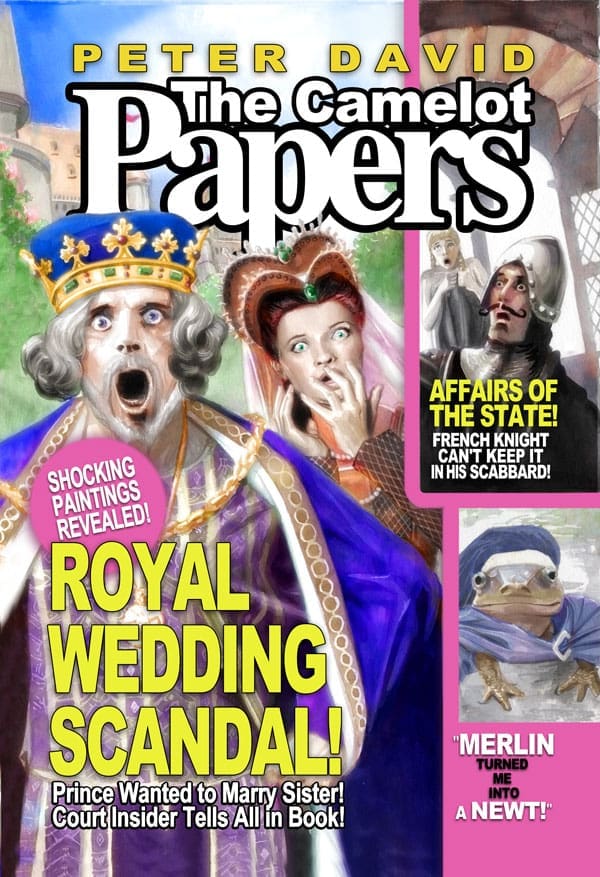
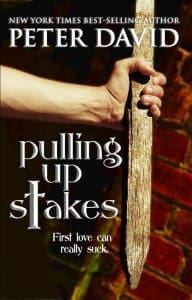
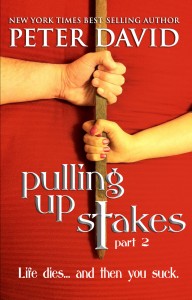
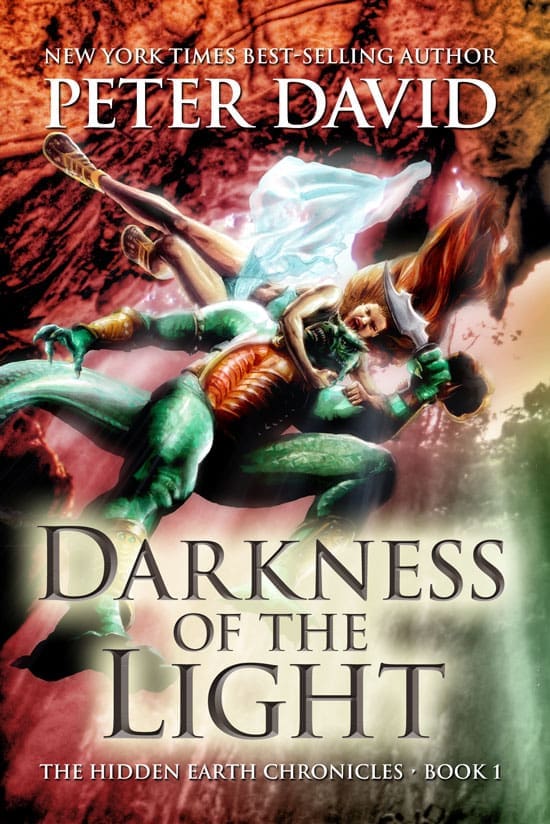
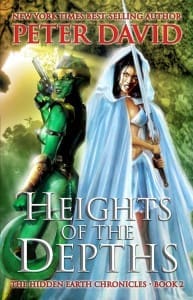
Ah yes, speculators.
.
One of the more disturbing moments I can recall goes back to around ’89 in my favourite comic book shop. A couple of speculators were holding a few comic books and debating between them which they ought to purchase. But they weren’t arguing over the merits of the writer, the story line or the art. No. They were trying to decide which would likely be worth more years down the line.
.
So what, I hear you say, that’s what speculators do. And you’re right. Except these couldn’t have been much more than about ten or eleven years old. And that just feels wrong to me.
.
(Right down there, in fact, with a moment which took place during the five minutes I watched – all I could tolerate – of … recalling the name … DEAL OR NO DEAL a couple of years ago. A mother was aiming for some jackpot and, while she was doing so, the camera panned onto her eight-year-old who was jumping up and down on his chair, pumping his fist in the air, shouting all the wile “Show us the money. Show us the money!” There’s healthy family values to be imparting to the kids. Feh.)
I remember those blister packs. I bought a few of them from the local Wal-Mart. Ripped those suckers right open as soon as we were in the car, too.
I remember getting the majority of my comics at the Waldenbooks at the local mall. I used to carry 79 cents in my pocket every time, just in case there was something I wanted to pick up. Lo and behold, I see Incredible Hulk #359.
Had to get it.
Problem was, there was that pesky price hike from .75 to $1 that threw a wrench in the works.
When I asked my mom for a quarter, ya know what she said?
“A dollar for a lousy comic book? You better start looking into a different hobby!”
It’s been 21 years, Mom…sorry! 😛
You should have said, “But Mom, this one isn’t lousy, it’s really good!”
“Collectors have fueled a surge in comics growth,” Mr. Calabrese says.
.
Boy, does that line really stand out in hindsight.
.
What was it, less than 3 years later Marvel went bankrupt?
Dear PAD. Frist off, thanks for posting/reprinting this BiD, as well as the one from a few weeks back regarding Jim Shooter’s role in the creation of the direct market—I was the one who asked your opinion of Jim Shooter in your last “open forum;” had I read this post first I would have used my question to ask what you thought of Matt smith as the Doctor or something.
Second, and this is probably an unfair question, since you wee out of marketing at this point, who’s idea was it to buy Heroes World and self distribute? We all know how it turned out, but I will say I can see, I really can see how from Marvel’s point of view it must have seemed like a good idea at the time. Although I don’t know why “wiser heads” (if there were any) didn’t prevail when it became apperent what a terrible idea it really was?
I only ask because I’m at that really, really wierd pint where I’m finding the “behind the scenes politics” more interesting then then comics themsleves.
“Mr. Calabrese has overseen an expansion in distribution to get books to an audience that’s younger than the core market of 9-to-17 year old boys.”
I wonder if that was an accurate age range for comics readership even in 1993. Sadly at this point, the core market is probably folks who were older than 9-to-17 year olds even IN 1993.
Just because Calabrese opined that he didn’t want to rely on one demographic in particular doesn’t mean that he held that demographic “in disdain”.